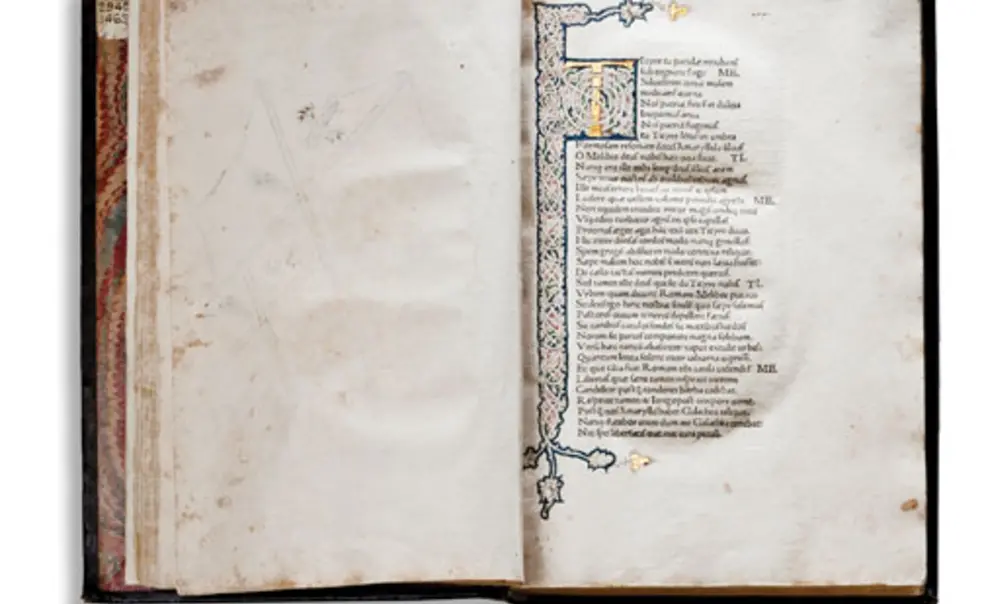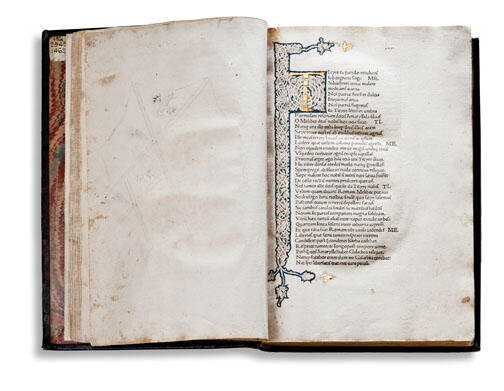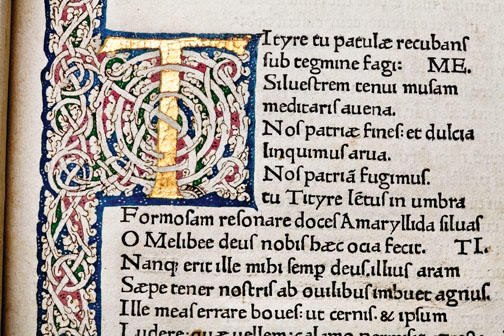From Princeton's vault: The 542-year-old Virgil
What: The German team of Sweynheym and Pannartz pioneered printing technology in Italy, cranking out copies of Virgil from their press in Rome. This rare volume is from the very first edition (1469) just 14 years after the unveiling of the Gutenberg Bible. Columbus was a teenager; Shakespeare’s birth still a century off.
Princeton’s prized collection of Virgil came from Junius Morgan 1888 *1896, nephew of J.P. Morgan. He was proud of his Sweynheym and Pannartz, which remains the only copy in the United States. Of the 179 known “incunable” Virgils (printed before 1501), the Princeton University Library houses a remarkable 52, including three found nowhere else.
The hand-drawn “illumination” is typical of incunables, which were treated like one-of-a-kind manuscripts. “Then a paradigm shift sank in,” says Craig Kallendorf (Texas A&M), who just re-cataloged the collection. “Suddenly people realized the printed book was something different,” and handicraft methods gave way to mass production.
Where: Junius Spencer Morgan Collection of Virgil, Rare Books Division, Department of Rare Books and Special Collections, Princeton University Library














No responses yet